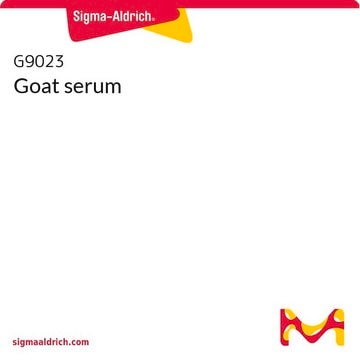If this product has an expiration or retest date, it will be shown on the Certificate of Analysis (COA, CofA). If there is no retest or expiration date listed on the product's COA, we do not have suitable stability data to determine a shelf life. For these products, the only date on the COA will be the release date; a retest, expiration, or use-by-date will not be displayed.
For all products, we recommend handling per defined conditions as printed in our product literature and website product descriptions. We recommend that products should be routinely inspected by customers to ensure they perform as expected.
For products without retest or expiration dates, our standard warranty of 1 year from the date of shipment is applicable.
For more information, please refer to the Product Dating Information document: https://www.sigmaaldrich.com/deepweb/assets/sigmaaldrich/marketing/global/documents/449/386/product-dating-information-mk.pdf
L2626
Methyl linolenate
≥99% (GC)
Sinónimos:
Linolenic acid methyl ester, Methyl cis,cis,cis-9,12,15-octadecatrienoate
Seleccione un Tamaño
57,30 €
Seleccione un Tamaño
About This Item
57,30 €
Productos recomendados
origen biológico
plant
Ensayo
≥99% (GC)
Formulario
liquid
índice de refracción
n20/D 1.470 (lit.)
bp
182 °C/3 mmHg (lit.)
densidad
0.895 g/mL at 25 °C (lit.)
grupo funcional
ester
tipo de lípido
unsaturated FAs
Condiciones de envío
ambient
temp. de almacenamiento
−20°C
cadena SMILES
CC\C=C/C\C=C/C\C=C/CCCCCCCC(=O)OC
InChI
1S/C19H32O2/c1-3-4-5-6-7-8-9-10-11-12-13-14-15-16-17-18-19(20)21-2/h4-5,7-8,10-11H,3,6,9,12-18H2,1-2H3/b5-4-,8-7-,11-10-
Clave InChI
DVWSXZIHSUZZKJ-YSTUJMKBSA-N
¿Está buscando productos similares? Visita Guía de comparación de productos
Categorías relacionadas
Aplicación
- Exogenous Jasmonic Acid Alleviates Blast Resistance Reduction Caused by LOX3 Knockout in Rice.: The research explores the role of jasmonic acid, associated with methyl linolenate, in enhancing blast resistance in rice. The findings show that external application of jasmonic acid can compensate for the resistance loss due to LOX3 knockout, providing insights into plant disease management strategies (Su et al., 2023).
- Effects of (13)C isotope-labeled allelochemicals on the growth of the invasive plant Alternanthera philoxeroides.: This study uses (13)C-labeled methyl linolenate to trace allelochemical effects on invasive plant species. The results indicate a significant impact on plant growth, suggesting potential applications in controlling invasive species (Hua et al., 2023).
Acciones bioquímicas o fisiológicas
Código de clase de almacenamiento
10 - Combustible liquids
Clase de riesgo para el agua (WGK)
WGK 1
Punto de inflamabilidad (°F)
235.4 °F - closed cup
Punto de inflamabilidad (°C)
113.0 °C - closed cup
Equipo de protección personal
Eyeshields, Gloves, multi-purpose combination respirator cartridge (US)
Elija entre una de las versiones más recientes:
Certificados de análisis (COA)
¿No ve la versión correcta?
Si necesita una versión concreta, puede buscar un certificado específico por el número de lote.
¿Ya tiene este producto?
Encuentre la documentación para los productos que ha comprado recientemente en la Biblioteca de documentos.
Los clientes también vieron
-
How can I determine the shelf life / expiration / retest date of this product?
1 respuesta-
¿Le ha resultado útil?
-
-
How is shipping temperature determined? And how is it related to the product storage temperature?
1 respuesta-
Products may be shipped at a different temperature than the recommended long-term storage temperature. If the product quality is sensitive to short-term exposure to conditions other than the recommended long-term storage, it will be shipped on wet or dry-ice. If the product quality is NOT affected by short-term exposure to conditions other than the recommended long-term storage, it will be shipped at ambient temperature. As shipping routes are configured for minimum transit times, shipping at ambient temperature helps control shipping costs for our customers. For more information, please refer to the Storage and Transport Conditions document: https://www.sigmaaldrich.com/deepweb/assets/sigmaaldrich/marketing/global/documents/316/622/storage-transport-conditions-mk.pdf
¿Le ha resultado útil?
-
Filtros activos
Nuestro equipo de científicos tiene experiencia en todas las áreas de investigación: Ciencias de la vida, Ciencia de los materiales, Síntesis química, Cromatografía, Analítica y muchas otras.
Póngase en contacto con el Servicio técnico











